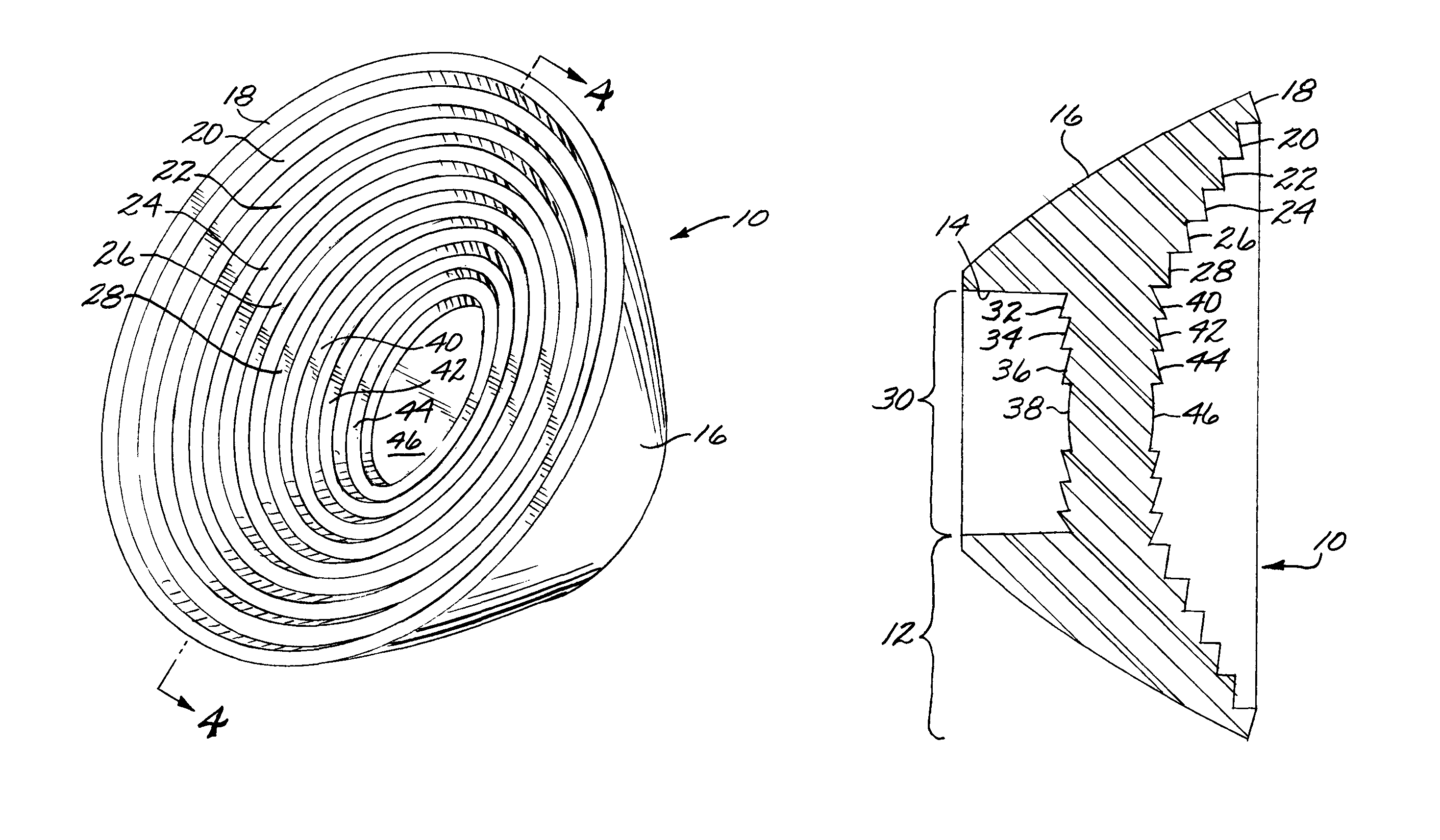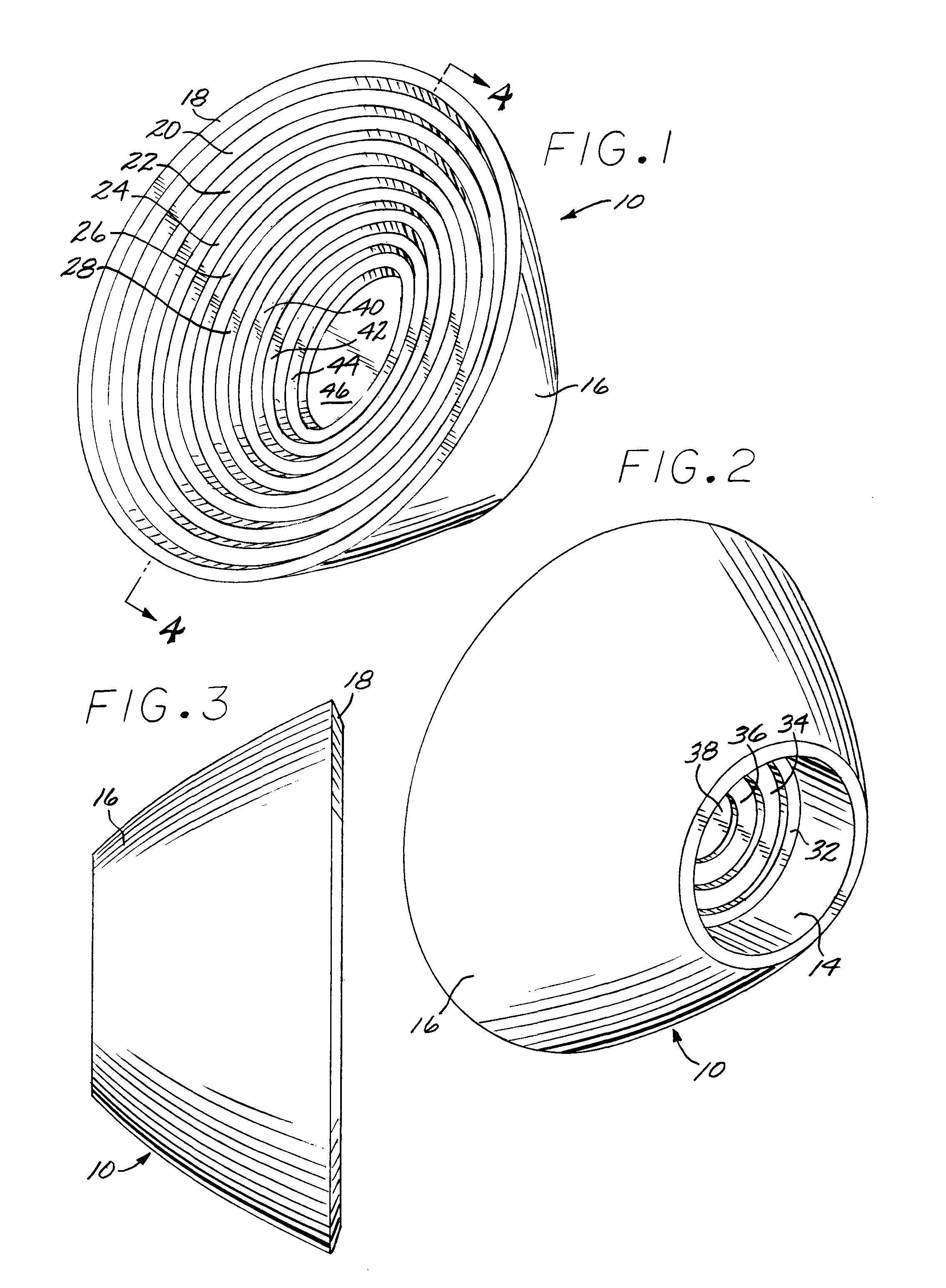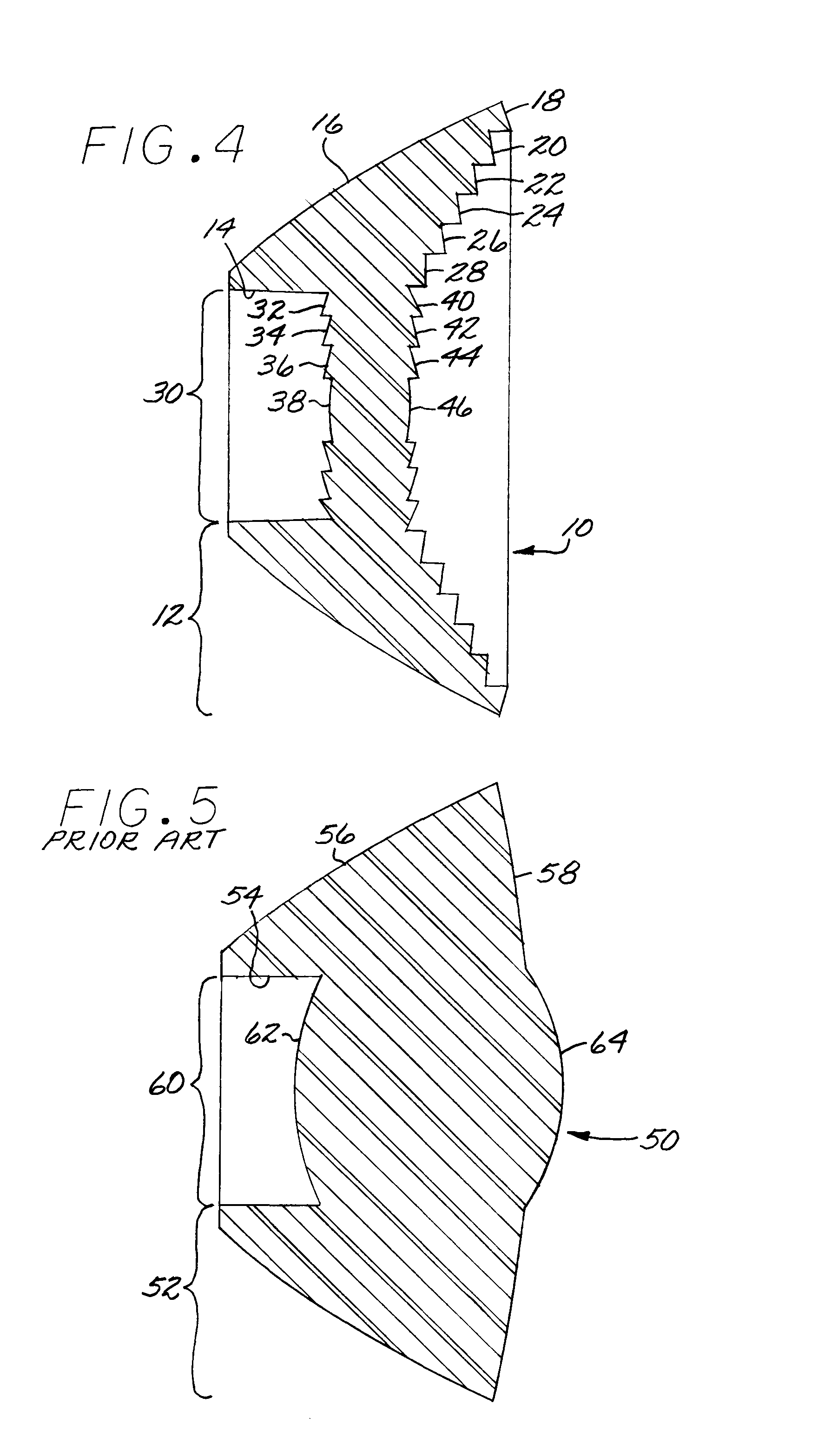Thin stepped tulip lens
a technology of stepped tulip and tulip, which is applied in the field of optics, can solve the problems of large surface to surface thickness of lens resin optics, low design competitiveness in a highly competitive market place, and high cost of manufacturing an injection molded tulip type secondary illumination optic, so as to reduce manufacturing time, reduce material content, and thin construction
- Summary
- Abstract
- Description
- Claims
- Application Information
AI Technical Summary
Benefits of technology
Problems solved by technology
Method used
Image
Examples
Embodiment Construction
[0028]Although particular embodiments of the invention have been described in detail for purposes of illustration, various modifications may be made without departing from the spirit and scope of the invention. Accordingly, the invention is not to be limited except as by the appended claims. Referring now in greater detail to the various figures of the drawings wherein like reference characters refer to like parts, there is shown in a perspective view at 10 in FIG. 1, a new type of secondary illumination tulip type lens optic having a central lens optic portion and surround total internal reflection (TIR) lens optic portion utilizing refractive faceted optical elements in selected optical surfaces facilitating a thin and low mass design suitable for low cost and high yield manufacturing, particularly suitable for use as a secondary illumination optic for LEDs; however, the device is also suitable for other applications requiring similar optical and manufacturing characteristics.
[002...
PUM
 Login to View More
Login to View More Abstract
Description
Claims
Application Information
 Login to View More
Login to View More - R&D
- Intellectual Property
- Life Sciences
- Materials
- Tech Scout
- Unparalleled Data Quality
- Higher Quality Content
- 60% Fewer Hallucinations
Browse by: Latest US Patents, China's latest patents, Technical Efficacy Thesaurus, Application Domain, Technology Topic, Popular Technical Reports.
© 2025 PatSnap. All rights reserved.Legal|Privacy policy|Modern Slavery Act Transparency Statement|Sitemap|About US| Contact US: help@patsnap.com



